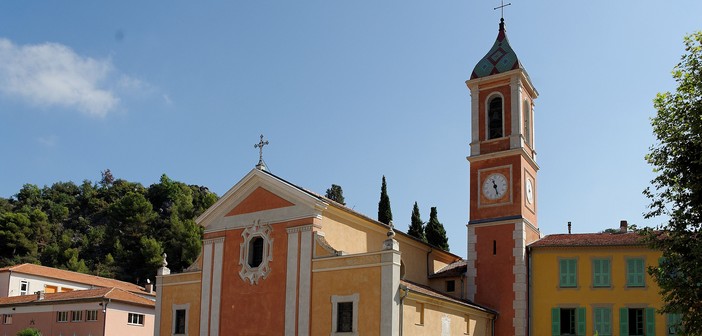This church dedicated to Our Lady of the Assumption is better known under the name of Saint Rosalie, the patroness of the village since the vow of the consuls of Tourette in 1631.
In 1048, another building is mentioned in a donation from Rostaing of Apt to the Abbey of Lérins. It is dedicated to Our Lady of the Assumption and Saint Savior and will become the chapel of the White Penitents.
The parish church of this village dates back to the 12th century. It consists of only a central nave and an apse. Under this nave was the charnel house and cemetery. The orientation of this church was west-east, with the main altar facing the rising sun. In the 13th century, Raymond Chabaud, lord of Tourette, brought back a wooden statue from the Sixth Crusade, the Virgin of Misraim.
It became Our Lady of Tourette. Let us return to this vow of 1631 and discover Saint Rosalie. This Sicilian saint is highly venerated in Palermo.
She lived from 1130 to 1160, secluded in a cave. In the 17th century, a hunter found her bones. They were brought back to Palermo in 1624 and placed in a silver sarcophagus. The plague was rampant in Sicily, and the epidemic ceased immediately. Her cult developed in Rome, in Paris where the Church of Saint Louis possesses a relic.
The plague resurfaced in 1631. On September 4th of the same year, the consuls of Nice vowed an annual procession to the saint, as Nice had been spared from the scourge. Thus, Saint Rosalie, the patroness of Naples and Palermo, is also that of Nice. Tourette Levens will honor the saint by the double dedication of its church.
In the 18th century, the church became too small and needed expansion. A lateral nave was added to the north, on the left side of the building. Arches were pierced, allowing the thickness of the walls of the original building to be measured.
In 1792, a second lateral nave was added to the south, on the right side. The internal decoration of this religious building follows the principles of Baroque art. The base is solid, and as one ascends, the impression becomes lighter and more ethereal. Man is a being of flesh and matter, and he reaches God through his spirit by freeing his soul.
Baroque thus expresses the elevation of souls when the spirit is freed from the flesh. Body, soul, and spirit, these three elements of man are the three levels of a Baroque construction.
In 1866, a third expansion took place, that of the central nave with the recession of the main altar and the creation of a choir. The new altar was consecrated by Monsignor Sola on June 20, 1869. The modifications to this church were completed in 1872.
Thierry Jan


